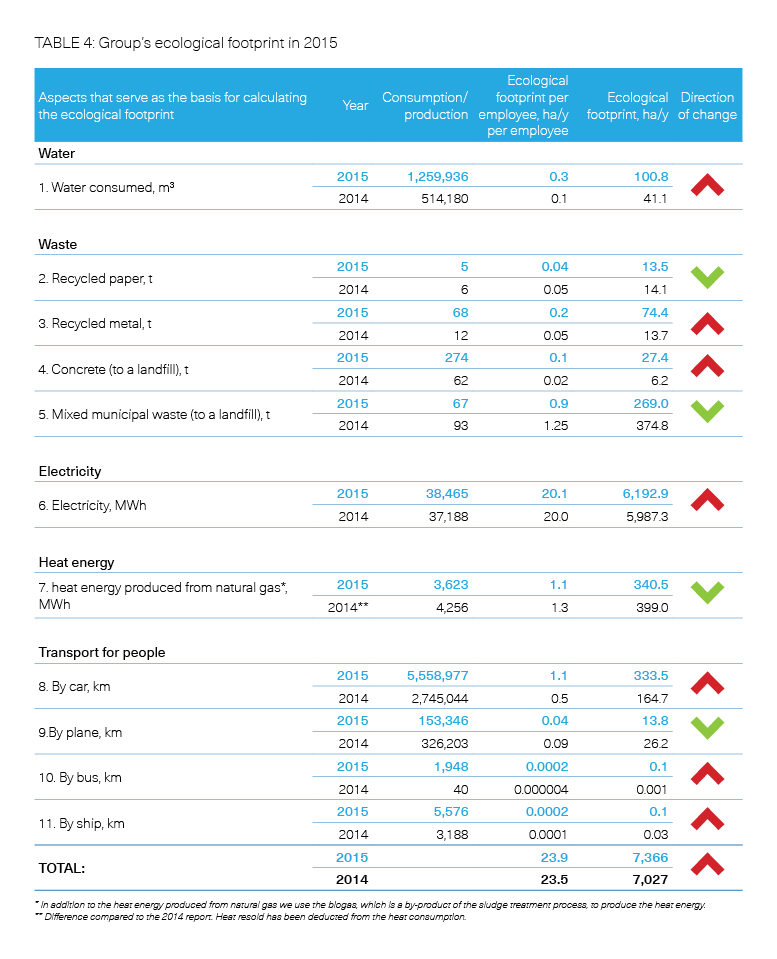Ecological Footprint
Ecological footprint method enables to evaluate the environmental impact of our activities in a complex manner. Ecological footprint assesses the use of space accompanying the lifecycle of a product or service and can be measured in hectares per year (hereinafter ha/y).
Our ecological footprint is calculated based on the methodology developed by the Estonian Fund for Nature. The calculation takes into consideration 11 different components and corresponding factors . The components have been divided into five fields (water, waste, electricity, heating, transport). In order to get a better comparison, the ecological footprint per one employee has been pointed out separately.
In 2015, we reviewed the principles of collecting the input for the ecological footprint calculation. For several components (waste, electricity and heat energy) it is not possible to distinguish between the consumption of AS Tallinna Vesi and its subsidiary OÜ Watercom. For this reason, the consumption of OÜ Watercom has been included in the transport component starting from this year. In addition, the collection of input for water consumption was improved, resulting in a significant increase in the amount of consumed water. In previous years the water consumption only covered the water consumed in the water treatment plant, but since 2015 the water consumption in customer operations and pumping stations was included in the data.
Annually, the Company has the strongest impact on the environment through its use of electricity, followed by the use of heat energy and motor transport. The use of electricity and heat energy and motor transport are in a close and inevitable connection with our core activity and the factors that impact this. The consumption of all the resources is analysed in the next chapters of this report.
